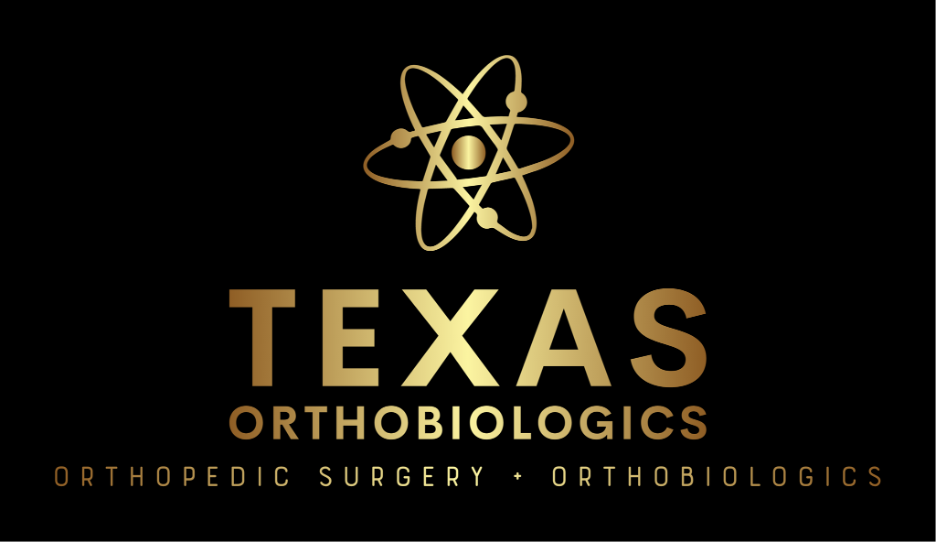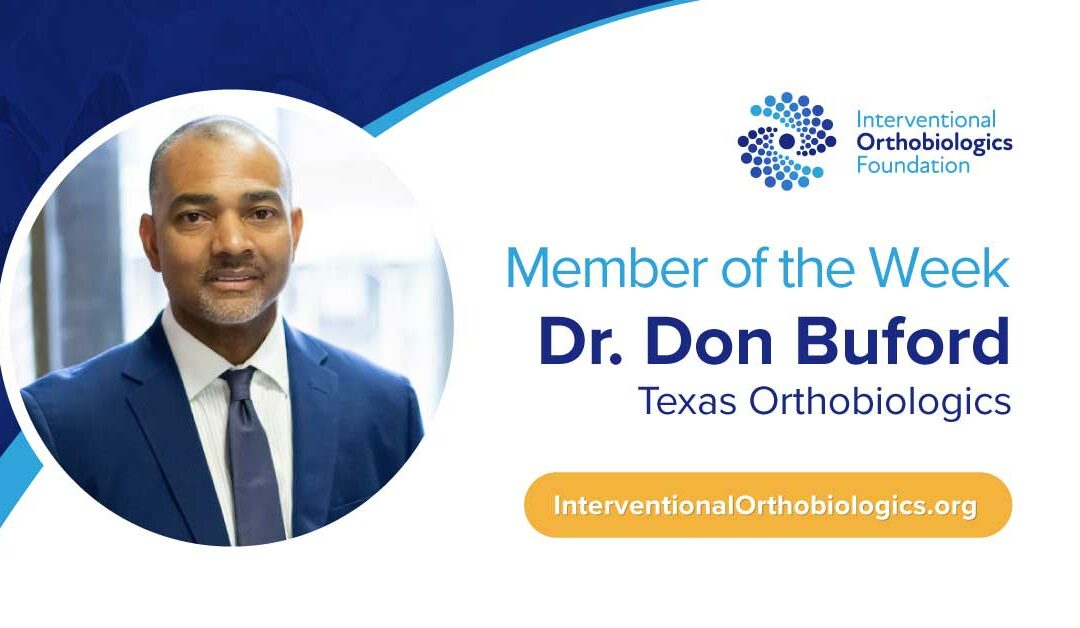Our Member of the Week blog introduces you to our fellow level members, showcasing their unique work and commitment to IOF. We feature different fellows who have made extraordinary contributions to the field of Interventional Orthopedics.
To be considered for this feature, please email us.
Practice Website:
Connect with Dr. Buford:
Meet Dr. Don Buford
IOF is fortunate to have an exceptional group of physicians guiding the organization. Today, we are thrilled to introduce you to IOF’s current president, Don Buford, MD.
Dr. Buford founded Texas Orthobiologics as a clinic where patients can get an unbiased orthopedic diagnosis and a complete discussion of their nonsurgical and surgical treatment options including orthobiologics or orthopedic surgery. The most common conditions treated are arthritis pain, back pain, tendon injuries, and sports injuries. His goal is to maximize patients’ quality of life and minimize their disability from any musculoskeletal condition in the safest, least invasive, most successful and most cost effective way.
For many patients, Dr. Buford can successfully get them back in play with therapy, medications or office based orthobiologic injections. In some cases, he uses PRP and bone marrow concentrate/cellular injections to assist, accelerate or augment the healing response in conjunction with a surgical procedure. Orthopedic surgery is reserved for those patients with the most serious injuries.
Q&A with Dr. Buford
IOF: Why are you passionate about IOF’s work? What value do you see for members?
The growth of clinical orthobiologics has been the most exciting advance in orthopedic medicine over the past 15 years in my opinion. The Interventional Orthobiologics Foundation (IOF) has been at the forefront of orthobiologics training and education. IOF has developed a post-graduate training curriculum that keeps pace with the rapidly growing evidence in this field. The next generation of orthopedic clinicians will come out of training in programs where the curriculum includes orthobiologics training and science.IOF is filling that role right now for established clinicians by providing peer reviewed training designed to merge basic science with best clinical practices from all of the orthopedic specialties from surgery to pain management.
I appreciate the wealth of clinical knowledge shared amongst faculty and members. I have personally been both a student and teacher in the curriculum and can vouch for its evidence based approach to teaching orthobiologics. Many IOF members are directly involved in clinical research showing that orthobiologic treatment is at least equivalent if not superior to medications, steroid injections, or even surgery. I have valued my membership in IOF from day one!
IOF: Tell us about your work at Texas Orthobiologics and your approach to treating patients.
My orthopedic practice includes both orthopedic surgery and orthobiologics injections. There are also times when I combine surgery and orthobiologics to try to get the best clinical outcomes for patients. We can treat nearly every joint with orthobiologics. I also treat the most common orthopedic tendon pathologies with orthobiologics. I also treat patients with low back pain from various etiologies such as disk disease, arthritis, or nerve disease.
IOF: What are your goals for your time as president of IOF?
As the current President of the Interventional Orthobiologics Foundation, I want to continue to foster a multi-disciplinary, collaborative approach towards establishing clinical standards for everything from nomenclature to training. There are so many talented orthopedic clinicians interested in advancing the basic and clinical science that I feel confident that orthobiologics use is about to accelerate exponentially. Orthobiologics growth is also fueled by patients looking for minimally invasive, non-surgical alternatives to treat their orthopedic pain and dysfunction. Patients no longer want to take narcotics or have steroid injections when there is a potential alternative that is non-surgical and safe.


